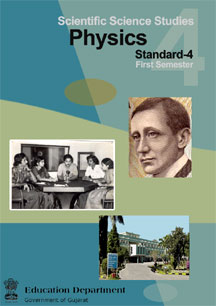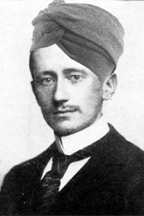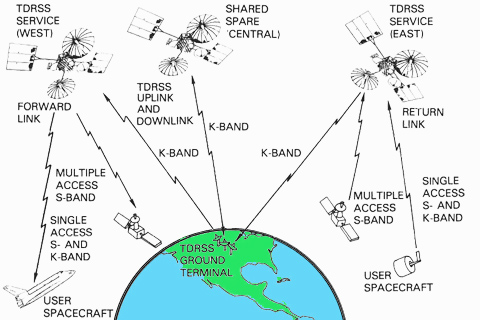Tuesday 1 April, 2014, 08:04 - Much Ado About Nothing
Posted by Administrator
Posted by Administrator
 It has been widely reported with great delight across India and in the world-wide media that the Level 8 Social Science school text books being given to children in the Indian state of Gujarat contain many inaccuracies. Examples of these heinous inaccuracies include 'factlets' such as these gems:
It has been widely reported with great delight across India and in the world-wide media that the Level 8 Social Science school text books being given to children in the Indian state of Gujarat contain many inaccuracies. Examples of these heinous inaccuracies include 'factlets' such as these gems:- It was Japan that dropped a nuclear bomb on America during World War II (and not vice versa).
- Carbon Trioxide (CO3) has increased due to the cutting of trees (CO3 is highly unstable but can be made by blowing ozone at dry ice).
- That after the partition of India in 1947, a new nation called 'Islamic Islamabad' was formed whose capital was Khyber Ghat (and not that Pakistan was formed with a capital Islamabad).
 Indian inventor Guglielmo Marconiji (pictured right) discovered the elastic-magneto wave and his brother, Luigi, is the source of the character in the SuperMario game.
Indian inventor Guglielmo Marconiji (pictured right) discovered the elastic-magneto wave and his brother, Luigi, is the source of the character in the SuperMario game.- Elastic-magneto waves travel at the speed of steam, which is generally taken to be 100 km per hour.
- The first radio station in India went on-air in 1748 and was called 'Bhapa Stesana Bharati' (Indian Steam Radio), as it used steam engines to generate the elastic-magneto waves. The signals from this station will not reach the moon until a week next Tuesday, if the timetable doesn't change.
- Phones work by transferring ear molecules between those speaking. Conference calls are a modern invention because of the need to clone ear molecules to be heard in several places at once.
add comment
( 412 views )
| permalink
| 



 ( 2.1 / 221 )
( 2.1 / 221 )




 ( 2.1 / 221 )
( 2.1 / 221 )
For those who have not yet seen the Oscar winning film, Gravity, please note that although there are no spoilers (in the traditional sense) in the ensuing text, for those who are regular readers of Wireless Waffle, reading what is to follow before seeing the film may leave you with the same level of bemused bewilderment that it did us, and may spoil your enjoyment of the film! So a spoiler that's not a spoiler.
The movie begins with a few astronauts on a space-walk (a.k.a EVA) to add some new equipment to the Hubble space telescope. They are communicating with each other using radios built into their space suits and also, at the same time, are able to communicate seamlessly with ground control in Houston.
Following the 'disaster' around which the film's premise is based, the astronauts lose communication with Houston, and, for that matter, any ground based people. According to the film, this has been caused by the loss of the communication satellites that were handling the signals. In addition, their space suit radios seem incapable of communicating with each other over ranges of just a few hundred metres.
Let's first examine the space suit radios themselves. According to a document provided by NASA the range of the communication system between suits is just 80 metres in the worst case (though could be much greater). Given that this system took US$20 million to develop and operates in a 'free space' environment, the poor coverage performance is lamentable. However, it appears that this element of the story might just be feasible. Note that the Russians use a much more off-the-shelf technology for EVA voice communication that has a much greater range!
Could a ground station communicate directly with a space-suit. Based on NASA's paper, and on typical UHF communication systems, no. But with a little ingenuity, for example the use of a high power transmitter and high gain antenna on the ground, it is not beyond the wit of man.
 As for a loss of Earth-space communication being caused by the loss of a communications satellite, there are satellites used to relay data from space to Earth (for example, the TDRSS), however full data communications with a space shuttle could also be accomplished directly from the shuttle to a network of ground stations at S-band frequencies around 2.2 GHz (and voice-only communication at VHF and UHF frequencies). Although in theory, these ground stations could be connected back to Houston via satellite, the chances are that there would be a terrestrial, fibre-based connection that could do the job just as well. So whilst passing over such a ground station, there is no reason why Earth-space communication could not have been re-established. Of course a space vehicle (such as the shuttle) is then needed to relay these signals to any astronauts on EVA.
As for a loss of Earth-space communication being caused by the loss of a communications satellite, there are satellites used to relay data from space to Earth (for example, the TDRSS), however full data communications with a space shuttle could also be accomplished directly from the shuttle to a network of ground stations at S-band frequencies around 2.2 GHz (and voice-only communication at VHF and UHF frequencies). Although in theory, these ground stations could be connected back to Houston via satellite, the chances are that there would be a terrestrial, fibre-based connection that could do the job just as well. So whilst passing over such a ground station, there is no reason why Earth-space communication could not have been re-established. Of course a space vehicle (such as the shuttle) is then needed to relay these signals to any astronauts on EVA.

There is then a moment when one of the astronauts finally receives a signal from the ground but it appears to be from a Chinese man whose dogs and baby can be heard to be barking and crying (respectively) over the air. Whilst tuning into these transmissions, the astronaut in question says 'you're coming in on an AM frequency'. What is an AM frequency when it's at home? AM is a modulation scheme and not a frequency. And why would someone sitting at home in China be using any kind of frequency that is shared with Earth-space communications? And the communication seems to be full duplex as the astronaut can communicate with the man on the ground concurrently with listening to his transmissions. None of this makes much sense.
 And lastly, communication with the ground is finally re-established when a landing module descends into the atmosphere. The range of the types of frequencies used for Earth-space communications at atmospheric altitudes is limited by the curvature of the earth, (e.g. at 30,000 feet, the range of communications is roughly 300 km). This would mean that those on the ground would have needed to be aware of the location where the landing module was coming down (odd that they could do this if they had had no communication with the landing module until that point) and thus be in the neighbourhood for communications to be possible.
And lastly, communication with the ground is finally re-established when a landing module descends into the atmosphere. The range of the types of frequencies used for Earth-space communications at atmospheric altitudes is limited by the curvature of the earth, (e.g. at 30,000 feet, the range of communications is roughly 300 km). This would mean that those on the ground would have needed to be aware of the location where the landing module was coming down (odd that they could do this if they had had no communication with the landing module until that point) and thus be in the neighbourhood for communications to be possible.
Whilst the film may have excelled for its special effects, the way in which the radio communications were portrayed will be a real 'spoiler' for anyone who knows anything about the radio technologies or radio propagation. Still, science-fiction, by its definition, doesn't need to be scientifically accurate!
The movie begins with a few astronauts on a space-walk (a.k.a EVA) to add some new equipment to the Hubble space telescope. They are communicating with each other using radios built into their space suits and also, at the same time, are able to communicate seamlessly with ground control in Houston.
Following the 'disaster' around which the film's premise is based, the astronauts lose communication with Houston, and, for that matter, any ground based people. According to the film, this has been caused by the loss of the communication satellites that were handling the signals. In addition, their space suit radios seem incapable of communicating with each other over ranges of just a few hundred metres.
Let's first examine the space suit radios themselves. According to a document provided by NASA the range of the communication system between suits is just 80 metres in the worst case (though could be much greater). Given that this system took US$20 million to develop and operates in a 'free space' environment, the poor coverage performance is lamentable. However, it appears that this element of the story might just be feasible. Note that the Russians use a much more off-the-shelf technology for EVA voice communication that has a much greater range!
Could a ground station communicate directly with a space-suit. Based on NASA's paper, and on typical UHF communication systems, no. But with a little ingenuity, for example the use of a high power transmitter and high gain antenna on the ground, it is not beyond the wit of man.
 As for a loss of Earth-space communication being caused by the loss of a communications satellite, there are satellites used to relay data from space to Earth (for example, the TDRSS), however full data communications with a space shuttle could also be accomplished directly from the shuttle to a network of ground stations at S-band frequencies around 2.2 GHz (and voice-only communication at VHF and UHF frequencies). Although in theory, these ground stations could be connected back to Houston via satellite, the chances are that there would be a terrestrial, fibre-based connection that could do the job just as well. So whilst passing over such a ground station, there is no reason why Earth-space communication could not have been re-established. Of course a space vehicle (such as the shuttle) is then needed to relay these signals to any astronauts on EVA.
As for a loss of Earth-space communication being caused by the loss of a communications satellite, there are satellites used to relay data from space to Earth (for example, the TDRSS), however full data communications with a space shuttle could also be accomplished directly from the shuttle to a network of ground stations at S-band frequencies around 2.2 GHz (and voice-only communication at VHF and UHF frequencies). Although in theory, these ground stations could be connected back to Houston via satellite, the chances are that there would be a terrestrial, fibre-based connection that could do the job just as well. So whilst passing over such a ground station, there is no reason why Earth-space communication could not have been re-established. Of course a space vehicle (such as the shuttle) is then needed to relay these signals to any astronauts on EVA.
There is then a moment when one of the astronauts finally receives a signal from the ground but it appears to be from a Chinese man whose dogs and baby can be heard to be barking and crying (respectively) over the air. Whilst tuning into these transmissions, the astronaut in question says 'you're coming in on an AM frequency'. What is an AM frequency when it's at home? AM is a modulation scheme and not a frequency. And why would someone sitting at home in China be using any kind of frequency that is shared with Earth-space communications? And the communication seems to be full duplex as the astronaut can communicate with the man on the ground concurrently with listening to his transmissions. None of this makes much sense.
 And lastly, communication with the ground is finally re-established when a landing module descends into the atmosphere. The range of the types of frequencies used for Earth-space communications at atmospheric altitudes is limited by the curvature of the earth, (e.g. at 30,000 feet, the range of communications is roughly 300 km). This would mean that those on the ground would have needed to be aware of the location where the landing module was coming down (odd that they could do this if they had had no communication with the landing module until that point) and thus be in the neighbourhood for communications to be possible.
And lastly, communication with the ground is finally re-established when a landing module descends into the atmosphere. The range of the types of frequencies used for Earth-space communications at atmospheric altitudes is limited by the curvature of the earth, (e.g. at 30,000 feet, the range of communications is roughly 300 km). This would mean that those on the ground would have needed to be aware of the location where the landing module was coming down (odd that they could do this if they had had no communication with the landing module until that point) and thus be in the neighbourhood for communications to be possible.Whilst the film may have excelled for its special effects, the way in which the radio communications were portrayed will be a real 'spoiler' for anyone who knows anything about the radio technologies or radio propagation. Still, science-fiction, by its definition, doesn't need to be scientifically accurate!
Tuesday 11 February, 2014, 19:09 - Much Ado About Nothing
Posted by Administrator
Given the current extreme weather battering the UK, the time seemed very apt to give a plug to an excellent novel whose plot-line is chillingly familiar.Posted by Administrator
 Flood by British hard-fiction author Stephen Baxter begins with the River Thames flooding in London and leads to a tale of global catastrophe. The follow-up, Ark, continues the story as the human race battles for survival.
Flood by British hard-fiction author Stephen Baxter begins with the River Thames flooding in London and leads to a tale of global catastrophe. The follow-up, Ark, continues the story as the human race battles for survival.The hard-fiction genre of books aim to use existing scientific theories but weave them into a piece of fiction. They're not about visits from aliens, or interstellar war, but instead focus on 'what might happen' by developing current scientific thinking. At the end of many stories, the author will divulge which bits of the book are real and which are made-up - and the bits that are real are often more incredulous than the fictitious bits.
If you have never read a science fiction book of any kind, Steven Baxter's books come highly recommended by Wireless Waffle and in many cases may not remain fiction for that much longer!
Friday 7 February, 2014, 13:43 - Broadcasting, Licensed, Much Ado About Nothing
Posted by Administrator
What a disappointment it was to find a recording called 90 years of the time pips, to discover that it is a special version of the pips¹ designed to celebrate their 90th birthday.Posted by Administrator
Wouldn't it have been more fun to have calculated how many pips there have been in 90 years and then created audio that just pipped (or beeped continuously) through all 90 years? How many pips would that be?
90 years × 365.25 days × 24 hours = 788,940 hours²
The first 5 pips have a duration of a tenth of a second, and the final pip has a duration of half a second, so the total duration of the pips each hour is exactly 1 second (5 × 0.1 + 0.5). A constant tone of duration 788,940 seconds (which is 9 days, 3 hours and 9 minutes precisely) would therefore represent '90 years of the time pips' much more accurately.
So here for your listening pleasure, is the Wireless Waffle tribute to the pips... 90 years of pips compressed into 9 days, 3 hours and 9 minutes.
 ¹ Not to be confused with Gladys Knight's backing group who, whilst also played on the BBC from time-to-time, are not the pips in question here.
¹ Not to be confused with Gladys Knight's backing group who, whilst also played on the BBC from time-to-time, are not the pips in question here.² Of course the pips have not been broadcast every hour over that period. Other time signals (such as the chimes of Big Ben) are used on some hours. Equally the BBC has not always been a 24 hour service, so this figure is probably a significant over-estimate.



